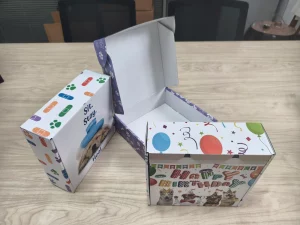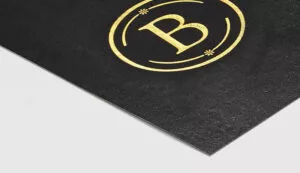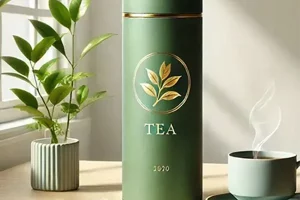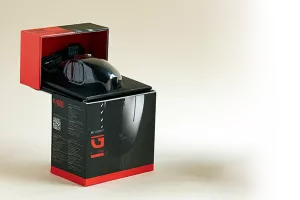The paper box manufacturing process is an essential part of creating packaging solutions for various products. This article will break down each step, from the initial design to the final production, ensuring a clear understanding of how paper boxes are made. We will explore the materials used, the importance of design, and the future of this industry, all while highlighting the key takeaways for readers.
目次
要点
- Paper box manufacturing involves several steps, including design, prototyping, and production.
- Different types of paper boxes serve various purposes, from packaging food to electronics.
- Using eco-friendly materials can help reduce the environmental impact of paper box production.
- Quality control is crucial to ensure that paper boxes meet industry standards and are durable.
- Future trends in paper box manufacturing include new materials and technology that improve efficiency.
Understanding the Basics of Paper Box Manufacturing
Paper box manufacturing is a crucial process that involves several steps, from selecting materials to creating the final product. The process begins with understanding the key materials used in production.
Key Materials Used in Paper Box Production
- Cardboard: This is the primary material, known for its strength and versatility.
- 板紙: Thinner than cardboard, it is often used for lighter boxes.
- Adhesives: These are essential for holding the box together.
Types of Paper Boxes and Their Uses
There are various types of paper boxes, each serving different purposes:
- Folding Boxes: Commonly used for packaging food and cosmetics.
- Rigid Boxes: Often used for luxury items, providing a sturdy structure.
- 段ボール箱: Ideal for shipping due to their durability.
Environmental Impact of Paper Box Manufacturing
The production of paper boxes can have significant environmental effects. However, many manufacturers are now focusing on sustainable practices.
The shift towards eco-friendly materials is essential for reducing the carbon footprint of the packaging industry.
In summary, understanding the basics of paper box manufacturing involves knowing the materials, types of boxes, and their environmental impact. This knowledge is vital for anyone interested in the packaging industry.
Designing the Perfect Paper Box
Creating the ideal paper box involves several important steps. Understanding your brand is crucial, as it shapes the entire design process. Here are some key points to consider:
Importance of Design in Paper Box Manufacturing
- The design reflects your brand’s identity.
- It influences customer perception and choice.
- A well-designed box can enhance product protection.
Tools and Software for Box Design
There are various tools available to help in designing paper boxes:
- CAD software for precise measurements.
- Graphic design tools for visual elements.
- Prototyping software to create 3D models.
Balancing Aesthetics and Functionality
When designing, it’s essential to find a balance:
- Aesthetics: Attractive designs catch the eye.
- Functionality: The box must protect the product and be easy to open.
- Cost-effectiveness: Design should also consider production costs.
A successful design not only looks good but also serves its purpose effectively.
By focusing on these aspects, you can create a paper box that stands out and meets your needs.
Prototyping and Testing in Paper Box Manufacturing

Prototyping and testing are crucial steps in the paper box manufacturing process. Creating prototypes helps ensure that the design is functional and meets the intended purpose. Here are some key aspects of this phase:
Creating Prototypes for Paper Boxes
- Prototypes allow designers to visualize the final product.
- They help in checking the structural integrity of the design.
- Prototypes can be made from various materials to simulate the final product.
Testing Durability and Functionality
- Testing is essential to ensure the box can hold its contents without breaking.
- Common tests include:
- Drop tests to check for damage.
- Load tests to see how much weight the box can handle.
- Environmental tests to assess how the box performs in different conditions.
Iterating Design Based on Feedback
- Feedback from testing can lead to important changes in the design.
- Designers should:
- Analyze test results carefully.
- Make necessary adjustments to improve the box.
- Retest to confirm that changes are effective.
Prototyping is not just about making a model; it’s about ensuring that the final product meets both marketing needs and functional requirements.
By following these steps, manufacturers can create effective and reliable paper boxes that meet customer expectations.
The Production Process of Paper Boxes
In the journey of creating paper boxes, the production process is a crucial phase that involves several steps. This process ensures that the boxes are made efficiently and meet quality standards.
Cutting and Shaping Techniques
The first step in production is cutting and shaping the paper. This involves:
- Using large machines to cut the paper into the right sizes.
- Shaping the paper into the desired box form.
- Ensuring precision to avoid waste.
Printing and Labeling Methods
Once the boxes are cut and shaped, the next step is printing and labeling. This includes:
- Designing graphics and text for the boxes.
- Using printers to apply these designs onto the paper.
- Adding labels that provide important information about the product inside.
Assembly and Finishing Touches
After printing, the boxes need to be assembled. This step involves:
- Folding the paper into the box shape.
- Gluing or taping the edges to secure the box.
- Adding any final touches, like coatings for protection.
The production process is not just about making boxes; it’s about creating a product that is both functional and appealing to customers.
In summary, the production of paper boxes is a detailed process that includes cutting, printing, and assembling. Each step is important to ensure that the final product is of high quality and meets the needs of consumers.
During the kraft process, the natural wood is ground into a pulp and then treated with white liquor, which is a mixture of sodium hydroxide and sodium sulfide. This method is essential for producing strong and durable boxes.

Quality Control and Assurance in Paper Box Manufacturing
Quality control is essential in the paper box manufacturing process. It ensures that every box produced meets the required standards. A quality control (QC) laboratory is a pivotal facility within the packaging industry, dedicated to ensuring that all products meet stringent quality standards. Here are some key aspects of quality control in this field:
Standards and Regulations in Paper Box Production
- Compliance with industry standards is crucial.
- Regulations may vary by region and product type.
- Regular audits help maintain these standards.
Common Quality Issues and Solutions
- Inconsistent Dimensions: Use precise cutting tools to ensure uniformity.
- Weak Seams: Implement better adhesive techniques.
- Print Quality Problems: Regularly check printing equipment for maintenance.
Role of Technology in Quality Assurance
- Automation helps in monitoring production quality.
- Software can track defects and improve processes.
- Data analytics can predict potential quality issues before they arise.
Quality control is not just about fixing problems; it’s about preventing them from happening in the first place.
By focusing on these areas, manufacturers can ensure that their paper boxes are not only functional but also meet customer expectations.
Sustainability Practices in Paper Box Manufacturing

Eco-Friendly Materials and Alternatives
In the paper box industry, using 環境に優しい素材 is crucial. Many manufacturers are now opting for:
- Recycled paper
- Biodegradable inks
- Sustainable adhesives
These materials help reduce the environmental impact of production.
Waste Management and Recycling
Effective waste management is essential for sustainability. Here are some key practices:
- Reduce waste during production by optimizing cutting techniques.
- 再利用 leftover materials whenever possible.
- Recycle scrap paper and boxes to create new products.
This not only conserves resources but also minimizes landfill waste.
Certifications and Standards for Sustainability
To ensure that paper box manufacturing is sustainable, many companies seek certifications. Some important ones include:
- Forest Stewardship Council (FSC)
- Sustainable Forestry Initiative (SFI)
- Cradle to Cradle Certification
These certifications help consumers identify products that are made responsibly.
Sustainability in paper box manufacturing is not just a trend; it’s a necessity for a healthier planet.
In summary, the industry is moving towards more sustainable practices, focusing on eco-friendly materials, effective waste management, and obtaining relevant certifications. This shift is vital for the future of our environment and the paper box market.
Future Trends in Paper Box Manufacturing
Innovations in Materials and Design
The paper box industry is seeing exciting new materials that are both strong and eco-friendly. Companies are experimenting with:
- Biodegradable plastics
- 再生紙製品
- Lightweight materials that reduce shipping costs
These innovations help create boxes that are not only functional but also better for the environment.
Impact of Technology on Manufacturing Processes
Technology is changing how paper boxes are made. Some key advancements include:
- Digital printing that allows for custom designs quickly.
- Automation in cutting and assembling boxes, which speeds up production.
- Use of FTP tech to improve supply chain efficiency.
These technologies help companies save time and money while making high-quality products.
Market Trends and Consumer Preferences
Consumers are becoming more aware of their choices. They prefer:
- Sustainable packaging options
- Custom designs that reflect their brand
- Boxes that are easy to recycle
This shift in preferences is pushing manufacturers to adapt and innovate to meet these demands.
The future of paper box manufacturing is bright, with a strong focus on sustainability and technology. Companies that embrace these changes will likely lead the market.
結論
In summary, the process of making paper boxes is both detailed and important. From the initial design to the final production, each step plays a key role in creating a quality product. We explored how ideas turn into designs, how materials are chosen, and how machines work to shape and assemble the boxes. Understanding this process helps us appreciate the effort that goes into making something we often take for granted. As we move forward, it’s clear that the paper box industry will continue to evolve, adapting to new needs and technologies.
よくある質問
What materials are used to make paper boxes?
Paper boxes are usually made from cardboard, which is a thick paper material. Sometimes, they also use recycled paper and special coatings to make them stronger or waterproof.
What are the different types of paper boxes?
There are many types of paper boxes, like gift boxes, shipping boxes, and food containers. Each type is designed for a specific use.
How does paper box manufacturing affect the environment?
The process of making paper boxes can impact the environment, especially if trees are cut down for paper. However, many companies are trying to use recycled materials to help reduce this impact.
Why is the design important in making paper boxes?
The design of a paper box is important because it needs to be attractive and functional. A good design helps the box hold its contents securely and look nice.
What is involved in testing paper boxes?
Testing paper boxes involves checking how strong they are and if they can hold what they are meant to carry. This helps make sure they won’t break easily.
How can paper box manufacturing become more sustainable?
Manufacturers can make paper boxes more sustainable by using eco-friendly materials, recycling waste, and following certain standards that help protect the environment.








